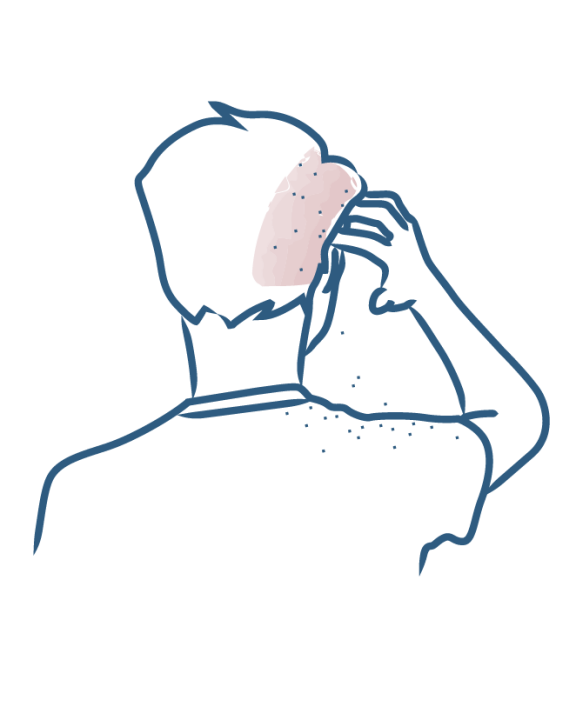
Do I have dandruff?
Dandruff is a very common phenomenon. One in every two people will develop dandruff at some point in their lives. It can be either a temporary or long-term condition. Dandruff is caused by multiple factors, which is why some people develop dandruff and others do not. Here are some tips to help you recognise dandruff and its associated symptoms.
Dandruff: what should I do?
Is it dandruff? I have a lot of dandruff in my hair, why? I have dandruff, what should I do? How can I get rid of dandruff? These are all things we can ask ourselves faced with this phenomenon, it is a source of anxiety and raises questions.
Before beginning treatment, it is therefore important to ensure it is in fact dandruff. If in doubt, do not hesitate to seek advice from a health professional.
How do I recognise dry dandruff?
Dandruff is small white or yellow scales (clusters of dead cells) found on the surface of the scalp and in the hair. Dandruff can take on one of two forms, depending on the type of scalp. Dandruff on a dry scalp is drier, smaller and more volatile, and will be seen on clothing and look like flakes. Be careful not to confuse it with psoriasis of the scalp, which is characterised by red patches covered with thick white scales. If in doubt, do not hesitate to consult your dermatologist. Dandruff on an oily scalp is greasy and larger because it clumps together in patches and is more likely to stick to the hair. It is more rarely seen on clothing.
Dandruff can sometimes be confused with lice eggs. It can be difficult to differentiate between nits (larval stage of lice) and dandruff in the first few days. If in doubt, do not hesitate to go to your pharmacist or consult your doctor to avoid giving head lice a chance to proliferate!
Where does dandruff accumulate?
When we talk about dandruff, we generally mean the scales seen on the hair or scalp. "Dandruff" on the face is called simply scales.
Dandruff is therefore small whitish scales visible in hair and on the scalp. In the majority of cases, dandruff is found on the scalp, but you can also see dandruff in beards and even dandruff in eyebrows.
Who gets dandruff?
Dandruff has multiple origins. It is thought to be caused by a deregulation in sebum secretion, the proliferation of certain micro-organisms, and a particular scalp sensitivity.
Scalp desquamation is correlated strongly with the activity of sebaceous glands, responsible for sebum production. In newborns, these glands are activated prematurely and stimulated under the influence of maternal hormones, which can cause what we call cradle cap. During childhood, gland activity slows down and dandruff is a rarer phenomenon. Then, during puberty, under the influence of sex hormones, sebum secretion increases, which is why first cases of dandruff are often observed at puberty. It can persist into adulthood, then become increasingly rare from the age of 50-60.
This is why it is quite uncommon to see dandruff in children. It is therefore a phenomenon that affects mainly young adults and adults, and more often men, probably due to the correlation with the concentration of androgenic hormones (male hormones).
What impact can dandruff have?
Having hair full of dandruff, even if it is a completely benign and harmless condition, can seriously affect the quality of life of those suffering from it.
It can trigger certain behaviours:
- Avoiding to wear certain colours, because it is more visible on dark colours
- Regularly checking in a mirror for dandruff in the hair
- Trying not to scratch
- Being afraid of what other people think
- Constantly looking for the miracle product!
Dandruff is a source of great concern and sometimes fear, for example that there may be a link between dandruff and hair loss.
Our care routines
Dandruff conditions

